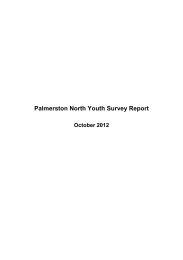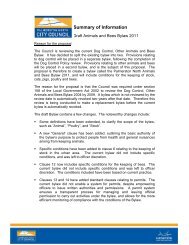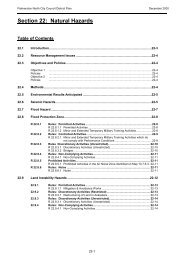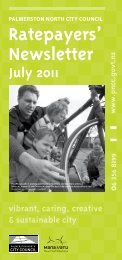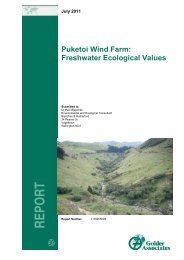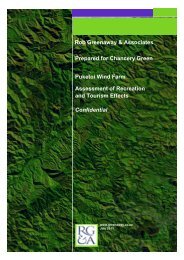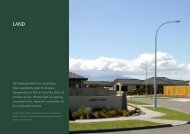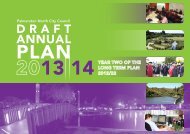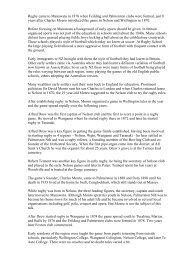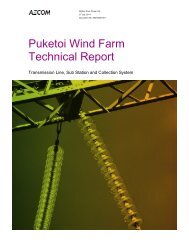RESIDENTIAL GROWTH STRATEGY - Palmerston North City Council
RESIDENTIAL GROWTH STRATEGY - Palmerston North City Council
RESIDENTIAL GROWTH STRATEGY - Palmerston North City Council
You also want an ePaper? Increase the reach of your titles
YUMPU automatically turns print PDFs into web optimized ePapers that Google loves.
necessary remedial works necessary to ensure its integrity. However, even in<br />
the event of a breach, the flows would be relatively shallow (i.e. less than 0.5<br />
metres) and slow flowing over most of the site - an exception being an area at<br />
the extreme north west corner, where land would need to be reserved as a<br />
ponding area. Any residual risk from the breach scenario can be managed by<br />
appropriate drainage design – the recommendation is that this is acheived by<br />
designing roads to have a dual function as drainage channels.<br />
Soil quality survey<br />
5.3.13 In order to establish soil quality, Agresearch was commissioned to undertake a<br />
detailed survey of all the preferred growth area options.<br />
5.3.14 For the Anders Road site the survey found that 9% of the area comprises Land<br />
Use Capability (LUC) class 1 soils. A further 34% is recognised as good LUC<br />
class 2 soils which would respond well to drainage. The balance, 57% of the<br />
land area, comprises lower end class 2 soils which have wetness limitations.<br />
There are pockets of lower class (LUC 3) soils, which are poorly drained,<br />
dispersed throughout the area.<br />
5.3.15 Although the majority of soils in this area are identified as high class, the actual<br />
availability for agricultural production is limited by existing development, largely<br />
of a rural residential nature. The survey found that only 49% of the land<br />
remains available for commercial cropping. Furthermore the proliferation of<br />
rural residential development means there are limitations on the potential to<br />
improve drainage of the land, owing to land access and maintenance issues,<br />
together with the inclusions of class 3 land.<br />
Summary<br />
5.3.16 On balance, the advantages of this site on the quality, sustainability, and<br />
efficiency of development are considered to outweigh the loss of predominantly<br />
lower quality Class II land, particularly when the more freely draining class 1<br />
and 2 soils at Te Matai and other riverside areas are available.<br />
5.3.17 As the topography is relatively flat, a high housing yield and variety of housing<br />
stock would be possible. Relatively low infrastructure costs would also allow<br />
greater housing choice, and allow for more affordable housing. There is strong<br />
developer interest in part of this site, as shown by the current Private Plan<br />
Change application with <strong>Council</strong>, together with other development interests in<br />
this area. This shows a high likelihood that the site, if identified, would be<br />
developed.<br />
Kelvin Grove (Preferred option)<br />
5.3.18 Approximately 50% of the Kelvin grove site, the northern part of the area, lies<br />
within the flight path and air noise contours associated with <strong>Palmerston</strong> <strong>North</strong><br />
airport.<br />
5.3.19 In principle, it is desirable to avoid intensification of residential development<br />
beneath the air noise contours. There are also safety issues relating to<br />
development beneath the flight path. For these reasons, it is considered that<br />
residential development should be confined to the southern part of the site.<br />
5.3.20 The mid-western part of the site is occupied by the cemetery. There are<br />
additional areas of land identified for future cemetery extensions to the east<br />
and south of the existing cemetery.<br />
- 26 -



